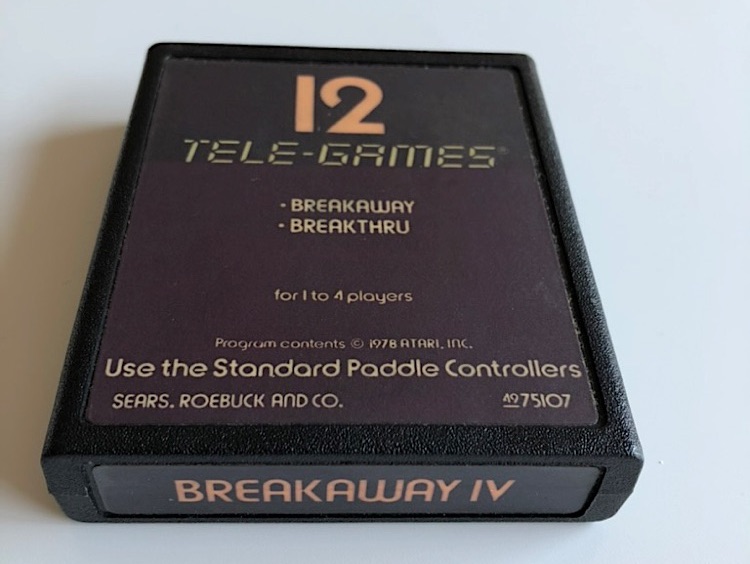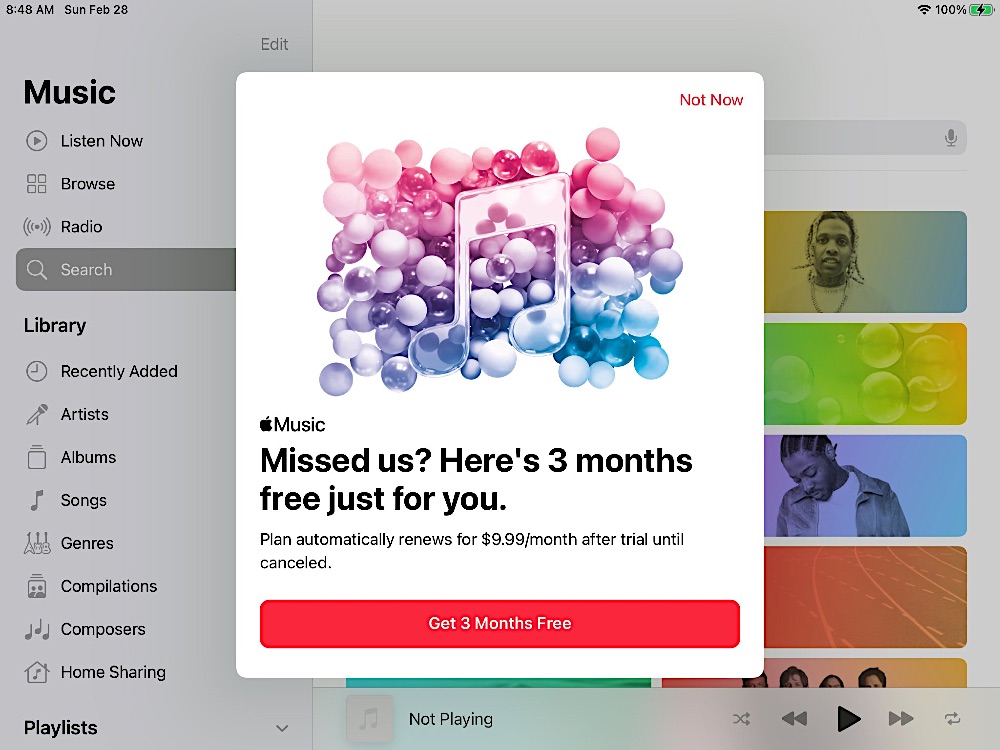Your grandfatherʼs iPhone
Saturday, January 6th, 2024 Alive 19,247 days
What still works on an iPhone 3G in 2024? Not much. But more should.
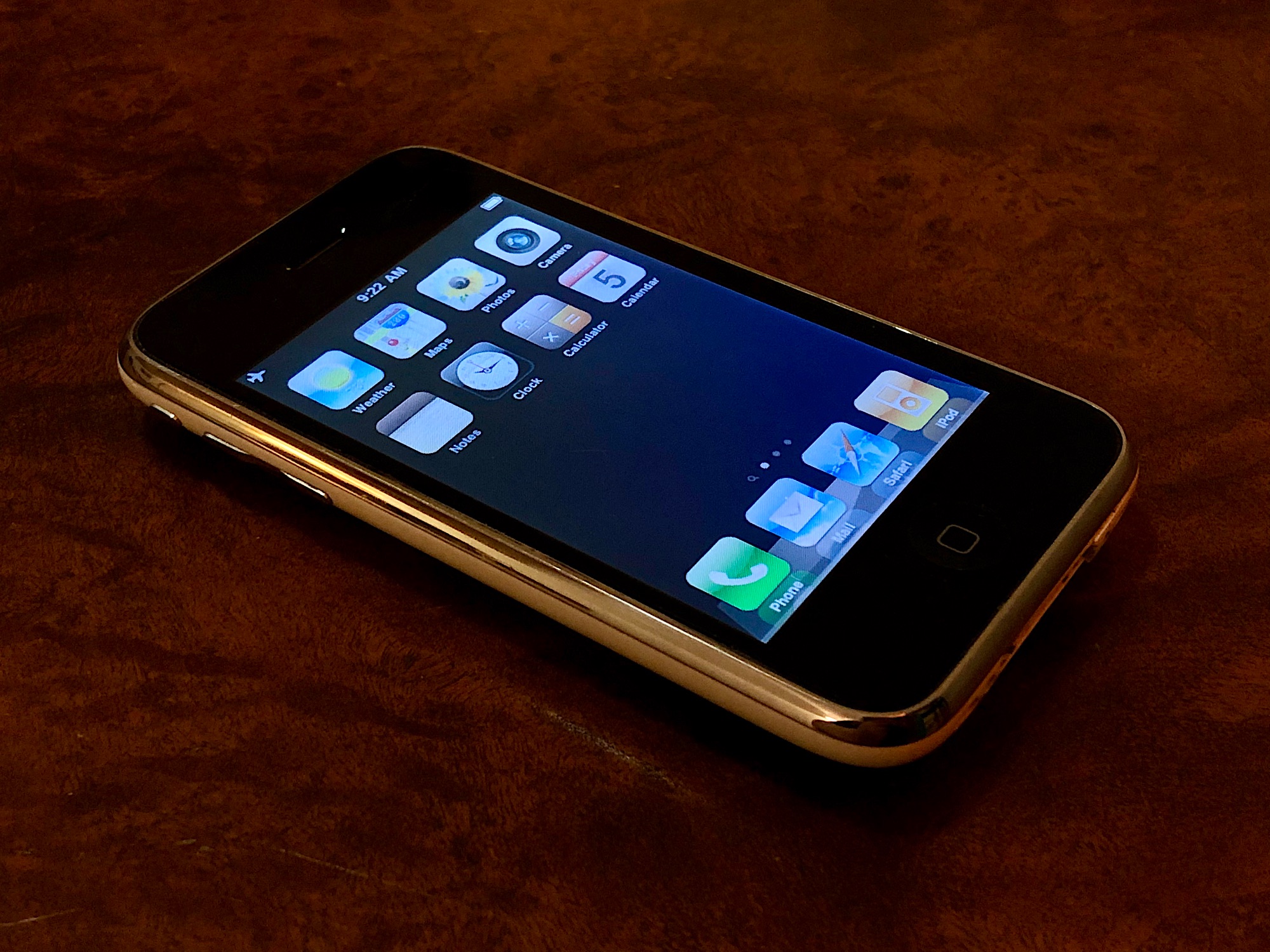
Like many technology enthusiasts, I have several boxes of gadgets that I keep around “just in case” I find a use for them later. One of the items in my boxes is an iPhone 3G, which I recently pulled out of storage because I found a use for it. Yes, in 2024.
The iPhone 3G came out in June of 2008, and I bought one for my wife on launch day. This is not that phone. My launch day iPhone 3G was stolen by a street urchin in a McDonaldʼs in Rome. At the time of the theft, Appleʼs Find My iPhone app was in its infancy, so for the rest of the day we were able to use my iPhone to watch my wifeʼs iPhone make the trip from Rome down to Naples, and eventually cross the Mediterranean Sea to Tunisia where the tracking stopped working.
To us, the tragedy wasnʼt that weʼd lost a telephone. Phones can be replaced. But iCloud photo syncing didnʼt exist yet, so my wife lost all of the photos she took in Rome, Naples, Ischia, Procida, and elsewhere. Understandably, she still grouses about it to this day.
A short time after we returned to the United States, the thiefʼs accomplices sold the phone to a woman in Tunisia, and for some reason instead of setting up her own e-mail account, she tried simply using the one already on the phone — my wifeʼs. Maybe the buyer thought that phones just came with e-mail already on them. I exchanged a few unpleasant messages with her in my tourist-grade French, and for what turned out not to be the last time in my life, I was told that because Iʼm an American, I am fat and I am rich and itʼs O.K. to steal from me. I just wanted her to e-mail me my wifeʼs photos, but seeing that our moral compasses were pointing in different directions, I changed the password on the e-mail, iTunes, and App Store accounts. Remote-wiping the phone was not yet a feature.
It should be noted that this is the somewhat unusual iPhone 3G, not the iPhone 3G🅂 which was released a year later and sold much better.
I wasnʼt a fan of the iPhone 3G, even when it was new. To me, the original iPhone, and the iPhone 4 still feel the best in my hand. They have a reassuring heft to them, and even though I know in my mind that the newer phones are more durable, the older ones feel more solid. The 3G, with its rounded plastic shell feels like a 1970ʼs Remington ladies electric leg shaver.
This iPhone is one of several in my collection, and itʼs not any physical flaws that keep my old iPhones from continuing to perform their original functions. Itʼs all in the software.
This iPhone 3G could probably do much of what it was intended to do, except for one big problem: connectivity.
The iPhone 3G cannot connect to any of my wifi access points. At first I thought it was because the 3G cannot handle modern encryption methods. But then I remembered reading somewhere that an accurate clock is required by some encryption schemes, and my 3Gʼs clock is not accurate. Thatʼs because there is no 3G cellular service for it to connect to where I live. This place is all 4G and 5G now, and the metaphorical plugs have been pulled on the 3G signals.
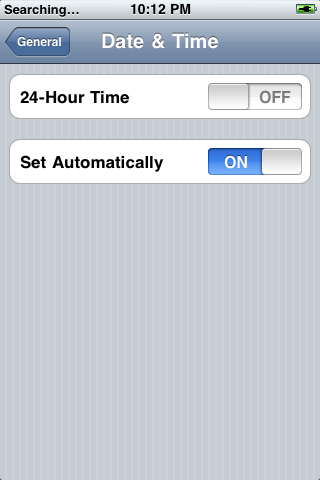
The phone does have some limited connectivity via USB. It shows up in Finder on a modern Mac just fine, and itʼs possible to sync music and other data with it. But any photos taken with the 3G canʼt be downloaded into a current Mac with either the Photos or Image Capture program. When connected, the phone promisingly shows up in the sidebar. When clicked, a message pops up (again, promisingly) asking you to unlock the phone. But that message vaporizes just a couple of seconds after it appears, along with the iPhoneʼs sidebar icon. No amount of plugging and unplugging or booting and rebooting either device returns the phone icon to Photos.
Fortunately, the same plastic bucket of tricks that held the iPhone 3G also yields a Mac computer from the same era. That machine is happy to slurp down the 3Gʼs photographic secrets like my Uncle Jerry through a bucket of oysters at a Poconos clam bake. Except that the Mac uses the standard Image Capture program to supply its needs, and not my Aunt Eileen.
Sadly, the iPhone 3G cannot use a tethered connection to access the internet. So this is what weʼre left with:

This is a screenshot of the iPhone 3Gʼs home screen in all of its… wait for it… 320x480 pixel glory. The current top-of-the-line iPhone is the 15 Pro, which sports a screen that has 23 times more pixels.
Letʼs start with the Settings app.
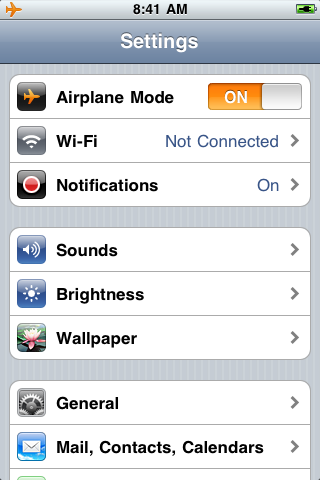
Settings
Thereʼs not too much to note in here. Though the visuals have been tweaked, thereʼs not much difference between a modern version of Settings, and the 3Gʼs. The modern version has many many more options, but the 3G does something the modern one doesnʼt. When the 3G is updating, the cogs inside the Settings icon rotate. Itʼs the sort of nice little touch that youʼd expect from an iPhone of its era, and exactly the sort of nice little touch that is shunned in todayʼs world.
The fact that there is no software update option in Settings confused me briefly. Iʼd forgotten that over-the-air software updates werenʼt a thing yet, and that to use an iPhone in any meaningful way, you had to plug it into a computer to update your apps, music, contacts, and everything else.
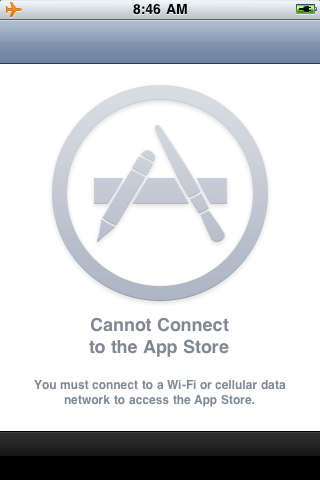
App Store
The App Store is a no-go. Without an internet connection, thereʼs no way to access it. Even if there were some apps in the current App Store that would run an on iPhone 3G, thereʼs no way to download them onto a Mac and sync them via USB. App syncing on the Mac does not exist anymore now that syncing has been moved from iTunes to the Finder.
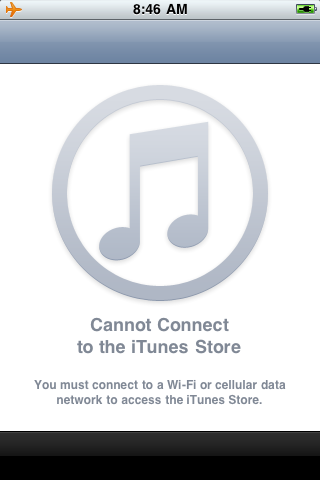
iTunes
Ah, the iTunes Store. This was peak iPhone. Millions of people spent billions of hours and dollars scouring Steve Jobsʼ bottomless stew pot of audible morsels. But, like with the App Store app, without an internet connection, it doesnʼt do anything anymore.
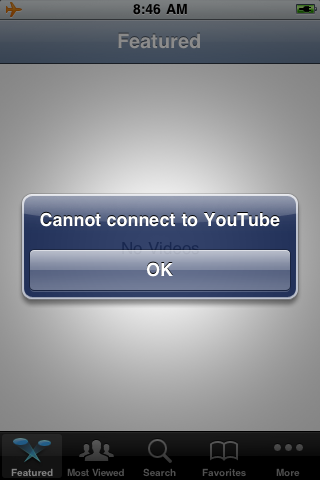
YouTube
Itʼs the same story for the YouTube app. Which make sense, since itʼs an internet streaming app. But dig that YouTube icon!

Itʼs an actual tube. In the 3Gʼs era, tube televisions were still very common. We had hundreds of them at work. I didnʼt dump my Trinitron and go flat screen until 2006ish. I suspect weʼre only a few years away from children wondering why the word “tube” is in “YouTube.”

Stocks
Like the others, the Stocks app requires an internet connection. The default indices are revealing. The Dow Jones Industrial Average and NASDAQ are default for the United States. The Standard and Poors is de rigueur for tech companies. Then thereʼs Apple, for obvious reasons. Google, for less obvious reasons. Perhaps because Google was already on the iPhone in the form of the built-in YouTube app, Google Maps app, and Safariʼs search feature. (Alternate search engines? You mean like Altavista Hotbot, Dogpile, and Ask Jeeves? Bing was still a year away, my friend.) The last one is Yahoo!, the formerly mighty internet company that now seems to have the same relevancy, business plan, and smell as Gold Bond Powder. But back then, Yahoo! was where all the information came for the Stocks app. So on the default list it went.
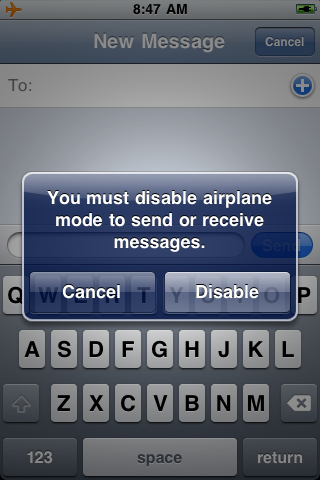
Messages
By this time, youʼre not at all surprised to see that Messages doesnʼt work without connectivity. But note that it requires a very specific type of connectivity: A cellular connection. There was no sending of text messages over an internet link yet. It all went via SMS. This historical fact is a bit inconvenient for people who like to indulge in conspiracy theories surrounding the current Messages appʼs use of green bubbles for SMS messages and blue bubbles for internet-delivered Apple Messages messages. People like to imagine that Apple moved SMS text messages into a “green ghetto” in order to make them hard to read and thus promote its own messaging platform. But the truth is that SMS text messages were green from day one. It was part of the design language of the iPhone: Things that a regular cell phone did had a green icon. Thus the Messages and Phone icons are green. When Apple added its messaging technology to the Messages app, it had more features than SMS could handle, so it got a different color bubble (blue) so people would know if they were on the old-fashioned text messaging platform invented in 1982 (SMS), or the modern one invented in 2011 (Messages).
The name of the app Messages is also interesting, because it later changed to iMessage when internet messaging became possible, and then back to simply Messages in more recent years.
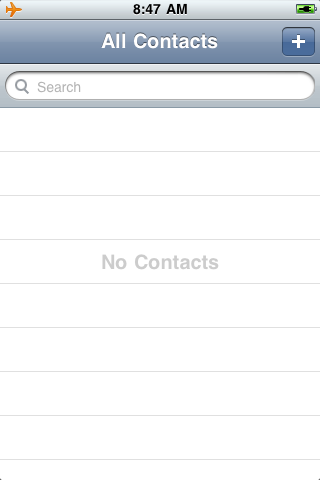
Contacts
This phone is contactless. Not in a NFC way. In the fact that there are no contacts loaded into it. Since the Contacts app works with standard iCal formats, I could probably sync my contacts to it with the Finder and a USB cable.
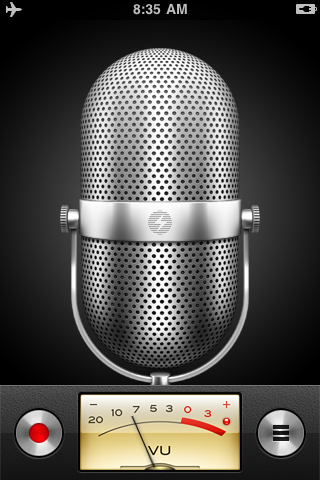
Voice Memos
Now thatʼs how you skeuomorph! For a while, people liked to complain on the internet about Appleʼs design language which translated real-world objects into screen representations of their functions. This is a feature that aids with discovery and usability, not a bug, but as is so often the case, the loudest voices carry the day in the tech world, and weʼre left with the boring flat slabs and bland shades of corporate blue that have overwhelmed our computing day. Today, more and more people are realizing that boring is bad, and skeuomorphism is coming back.
Because it looks like a real-world object, the very simple user interface of the Voice Memos app needs no explanation. No help bubbles popping-up. No onboarding mechanism. This app should inspire apps of the future.
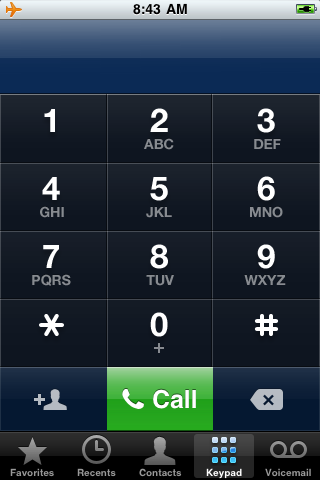
Phone
The Phone app of yesteryear looks very much like the phone app of today. The only notable difference is that the old one has buttons that look like actual buttons, instead of disembodied numerals floating around in the inky void of deep space.
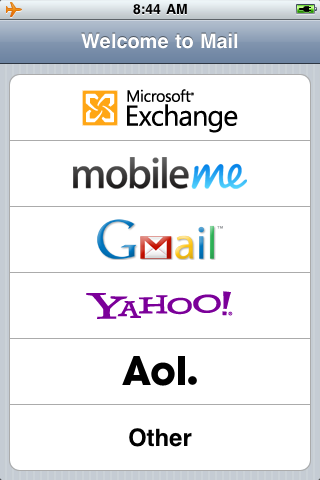
Mail only goes this far without an internet connection. But like the Stocks app, itʼs interesting to see the defaults. All of the choices are viable options today, except for Appleʼs service. Mobile Me went bye-bye just four years after this phone came out. For long-time Apple users, itʼs been an annoying adventure as our e-mail addresses were migrated and duplicated from iTools to .mac to Mobile Me to iCloud. To this day, when Iʼm asked to sign into some Apple services, it will seemingly choose randomly between my @mac.com, @me.com, @icloud.com, or my other non-Apple Apple Accounts e-mail addresses. This is not ideal when youʼre on an input-limited device like an AppleTV.

Safari
Safari was one of the killer apps for the iPhone. A real internet browser on a phone! I shared Steve Jobsʼ glee when he publicly demonstrated viewing the New York Times on a device that fit in the palm of either of our hands. It felt like the future had fully arrived.
Again, thereʼs no internet connection, so blah blah fishcakes.

iPod
Another killer app for the iPhone was the fact that you no longer needed to carry both a mobile phone and an iPod with you. One tool to rule them all! Sure, mobile phones had music players in them before the iPhone. My Sony Ericsson M600i (as used by James Bond) had one. And guess what — it sucked. It crashed more often than Mobile Microsoft Word on that thing. The only way I could get it to reliably play music from the time I left work at WGN-TV to getting back home in the Loop was to wait for a full moon, swing a dead cat over my head three times, and hold my breath on the entire Brown Line ride home. If I made it to Clark and Lake without the phone rebooting itself, Iʼd stop by the bodega on the corner and buy a lottery ticket, because it was my lucky day.
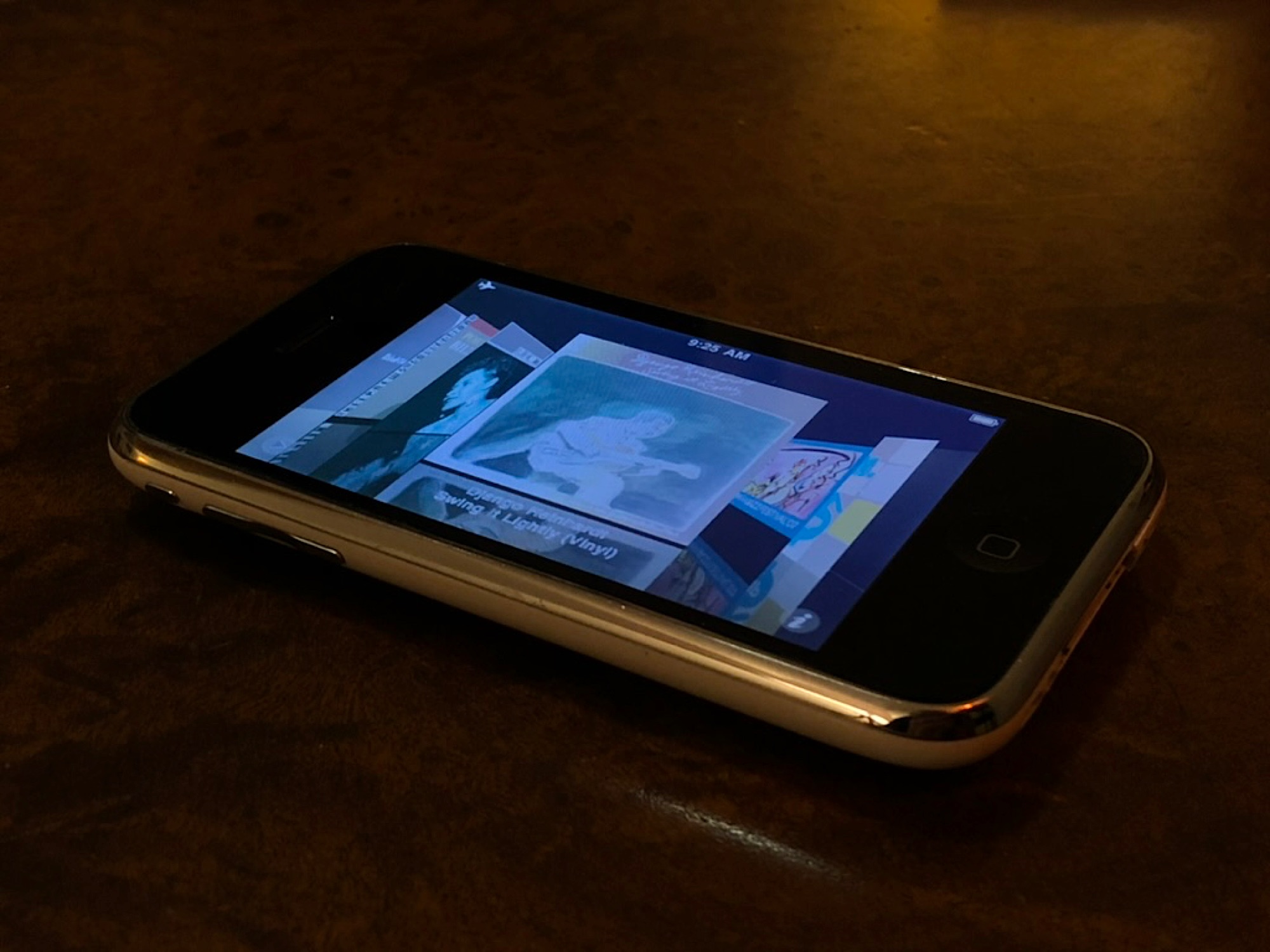
Because the iPhone 3G cannot be updated beyond iPhone OS 4.2.1, the iPod app still has CoverFlow. This was the beeʼs knees to music enthusiasts. It was like flipping through your record albums anywhere on Earth. Sadly, Apple got sued over CoverFlow. And even though it won on appeal, for some reason Cupertino decided to yank the feature once Mr. Jobs was safely dead and notions of delighting audiophiles were swept out the door.
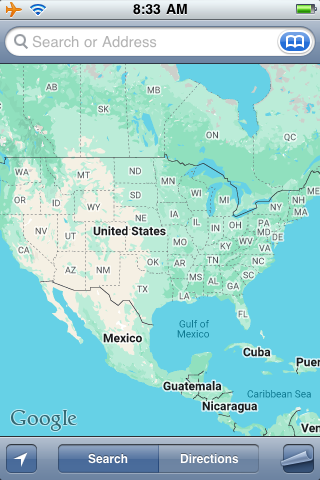
Google Maps
Hereʼs something completely unexpected. Google Maps works. Thereʼs no reason it should, since thereʼs no internet connection and the phone has been completely wiped so thereʼs no map cache. I can only guess that the app comes pre-loaded with a base set of common maps so that it doesnʼt have to rely on the eraʼs slow cellular data connections so much. When I get some time, Iʼll have to explore the limits of this. I expect it will be interesting.
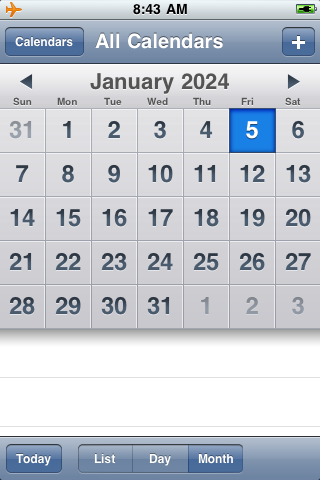
Calendar
The calendar app works, once you manually set the date and time in the Settings app. As with most calendar apps on a phone, thereʼs really no way to go right. Phones make for terrible calendars. An iPad is suitable. But thereʼs just not enough digital real estate on a phone screen to avoid making sacrifices.

Photos
The Photos app works. This appears to be the last photograph I ever took with this phone. Itʼs of Louis, in our apartment in Aqua. There was only a narrow window of time when we lived at Aqua, and Louis was still alive, so the photo must be from early 2011. On my end table in the background, you can see my original launch day iPhone playing music through a Sony radio. Itʼs the same radio that I plan to mate with this iPhone 3G to play music, and the reason I dug this phone out of my bucket oʼ gadgets.

Camera
The camera works, but man is it slow. The focus is awful. The exposure is terrible. There are only two buttons: One to take a picture, and one to show you the picture you just took. The images are 1,600x1,200 pixels. Thatʼs not quite two megapixels. The current iPhones take photos 6,048x8,064 pixels. Thatʼs 48 megapixels, or 24 times bigger than an iPhone 3G.
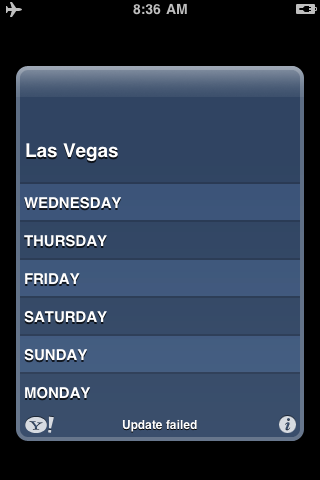
Weather
Itʼs hard to say if Weather might work if I was able to give this thing an internet connection. APIs change so often, itʼs possible that the iPhone 3G might be left out in the cold. Still, you could always access the weather onli… oh, wait.
style="margin-top: 3em;"
Notes
Notes works fine. But even if you had an internet connection, donʼt expect it to work with any of the notes that you have on your current iPhone or iPad or Mac. Note syncing is strictly between the phone and the computer. Though, itʼs possible that if you were to sync your modern iPhoneʼs notes with the same computer that they might migrate. At one time the Notes app stored its contents as simple IMAP data. Thatʼs why you used to be able to sync notes between devices with any old e-mail account acting as an intermediary. I believe that is still true today.
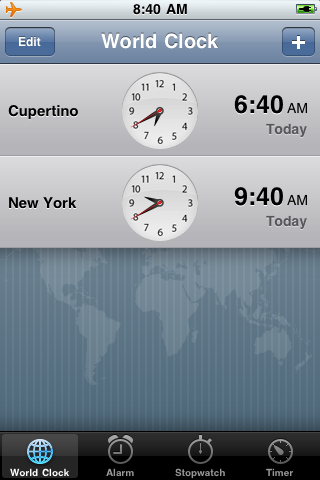
Clock
The clock works, but the time isnʼt perfect because I had to set it manually. And the time zones are probably not right anymore, since those things seem to change all the time. There hasnʼt been a change to the Daylight Saving rules in the United States since this phoneʼs last operating system update, so it should be fine as an alarm clock.
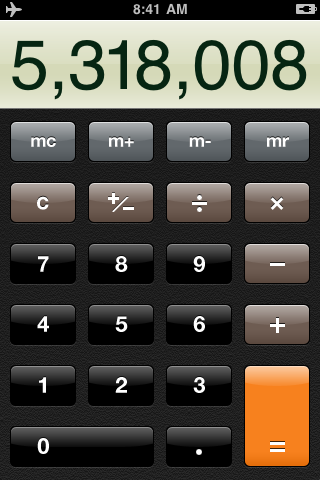
Calculator
One plus one remains two.
To sum up, the iPhone 3G is a good phone, when it isnʼt neutered. And without an internet connection, its utility is significantly stunted. Iʼm going to try to remember to bring it with me when I go out some day to see if itʼs possible to find a public wifi access point thatʼs less persnickety about its security. Maybe at a cafe, or a hotel. Or perhaps in a library, or a community center, or a Metro bus, or some other cash-strapped municipal outpost that likely doesnʼt have the money to upgrade access points all the time. Or maybe Iʼll bring it with me to the parts of Mexico or Honduras or Nevada where Iʼve been recently where 3G networks are all thatʼs available. Perhaps then Iʼll be able to re-write this article with much more positive results.
